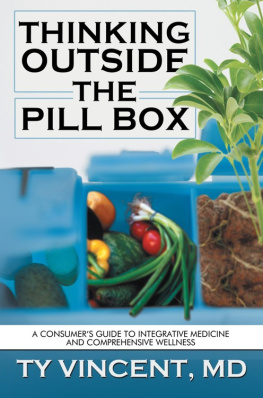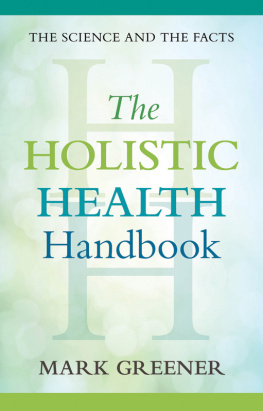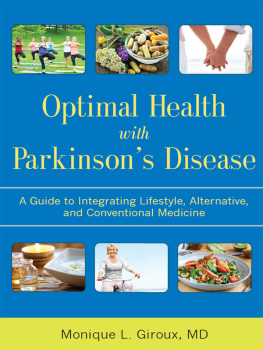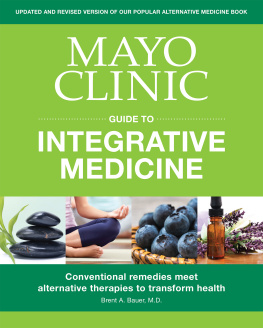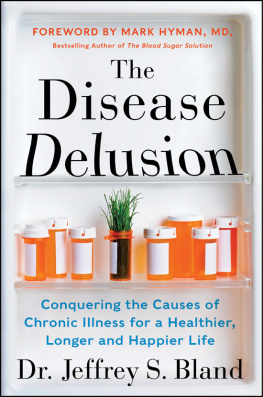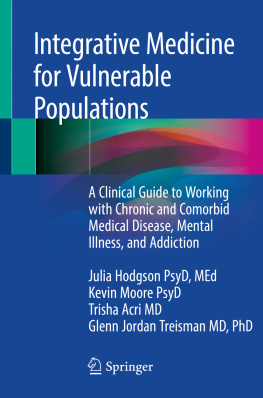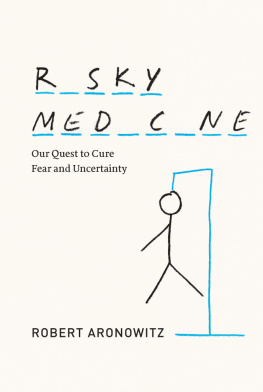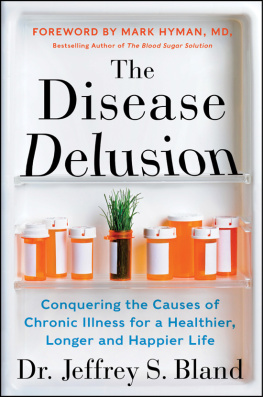THINKING OUTSIDE
THE PILL BOX
Ty Vincent, MD
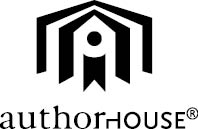
AuthorHouse
1663 Liberty Drive
Bloomington, IN 47403
www.authorhouse.com
Phone: 1-800-839-8640
2012 Ty Vincent, MD. All rights reserved.
No part of this book may be reproduced, stored in a retrieval system, or transmitted by any means without the written permission of the author.
Published by AuthorHouse 8/15/12
ISBN: 978-1-4772-5514-8 (sc)
ISBN: 978-1-4772-5515-5 (dj)
ISBN: 978-1-4772-5513-1 (e)
Library of Congress Control Number: 2012914245
Any people depicted in stock imagery provided by Thinkstock are models,
and such images are being used for illustrative purposes only.
Certain stock imagery Thinkstock.
This book is printed on acid-free paper.
Because of the dynamic nature of the Internet, any web addresses or links contained in this book may have changed since publication and may no longer be valid. The views expressed in this work are solely those of the author and do not necessarily reflect the views of the publisher, and the publisher hereby disclaims any responsibility for them.
CONTENTS
To my wife, Brandilyn, who has never made me doubt my own self worth.
And, to anyone who may find something useful in this book.
Welcome to my rant!
Hopefully this book will find you well, or possibly ill, and be of some use to you in either case.
My goal is to educate people, in the optimal care of their body, and to promote health for both themselves and their family. A second goal, which will become obvious in Section II, is to encourage every individual to take charge of the world in which we live. I would like everyone to realize that we all have the power, and the responsibility to steer our collective future toward a healthier one.
I would like to offer some guidance as to the structure of this book, so that you may get what you want from it, and not waste your precious time reading sections you care nothing about.
There is a rather long About the Author passage. It reads more as an autobiography of sorts, with far more personal detail than one would expect in a book like this. I felt it important for the reader to understand the source of opinions and information offered in this book. If you dont care about my personal story, feel free to skip it.
The Introduction provides an overview of the purpose and ideas within the book. No surprises. If you tend to skip introductions in nonfiction books, intending to read the rest of the text, feel free to skip this as well. You have my blessing.
Section I is largely a glossary. It offers my own definitions and explanations for some terms used in integrative medicine. It also may introduce the reader to some new concepts in health and science. It may be important for most to read this because some terms used later in the book can then be better understood. It may also be useful to understand the relevant philosophies in integrative medicine at the outset.
Section II is a fairly long, somewhat ranting, account of my view on how American medicine got to the place it is, and what I feel is wrong with it. It admittedly gets fairly opinionated and somewhat inflammatory at times. I am very passionate about this. I tried to tone it down, but likely failed to be diplomatic here and there. If the history of modern medical evolution or dealing with potential socio-political conflict is of no interest, just skip this entire section. It is not critical to improving ones health.
Section III finally gets to the meat of this text. It is a large portion of this book, devoted to all the things I think are important for people to achieve optimal health. It involves understanding the inputs to our bodies. This includes food, fluid, mineral, vitamin, the air we breathe, as well as concepts related to psychology and energy. This section should be useful to every reader, in its entirety.
Section IV is the largest section of the book, and may not all be relevant to a given reader. This is where my particular experience in medicine comes into play. It is a section where I discuss what I feel are the real underlying causes of most chronic medical problems seen in our society. It is going to be the most important section of the book for anyone suffering from chronic medical illness, and may be of some interest as well to those currently enjoying good health. I suggest reviewing the chapters within the Table of Contents and then choosing which material to read first; this section does not need to be read in order, nor completely, to find what is needed.
The last section is my attempt at a brief summary of the book, the meat of what I think should be understood. Feel free to read this section first if you wish, and then go back to read the relevant parts of the book for anything you would like more information about. In a way this is your final checklist for optimal health, so feel free to copy it or write it out as a To Do list for yourself, and post it somewhere that will be in your face.
Last is a bibliography that includes sources of information for my writing. I encourage reading any of the books Ive mentioned here, or that are suggested in the text. There is a mountain of information out there, funneled through many different minds and opinions. Dont take what I have to say, or any of these authors Ive mentioned and respect, as the gospel in this field. I encourage all of you to read as much as you can, broaden your experience and form your own opinions.
Who am I, and why should you listen to me?
Well, thats a very fair question and one that should be asked more often of all health care professionals. I imagine that very few of you have ever asked your doctor what their test scores were like through school, just as people rarely seem to question why a celebrity spokesperson should be trusted regarding a scientific topic. Its also quite striking how differently the same news can be reported between any two news channels, such as MSNBC and Fox News, for example. Always consider the source and the motives behind it.
So, Ill tell you a little bit about myself, where Im coming from, and where I hope we can all get to with the information in this book.
My name is Ty Robert Vincent. I was born in Anchorage, Alaska, on July 6, 1973, to Dennis and Mary Vincent. They were living in a small trailer in the Spenard area (if you dont know Anchorage, this is not a nice part of town) when I was born. By age two, we had moved, out of the city, to a much smaller community, called Wasilla (yes, thats where former Governor Sarah Palin is from, and no, we are not related). When we made the move, less than 1,500 people lived there at the time. I actually still live and work in Wasilla (as of 2009-11, when this was written), but now, more than ten times that many people live in the community.
My father worked as a correctional officer and my mother stayed home until I was in elementary school. A few years later, they went into real estate, which seemed like a good idea at the time. There was a point, in the early 1980s, when the housing bubble burst and it looked like we might have to run from bill collectors. Luckily, my father found another job back with the state correctional system that allowed us to stay where we were and maintain a basic standard of living.
I was a Caucasian, lower middle class, left-handed, extremely nearsighted, socially awkward, mildly asthmatic boy. I guess this is relevant because my wife learned, in her psychology training, how people, with that particular set of demographics, tend to do better in school. The theory is that we arent very good at sports and probably have access to, and prefer, books. It wasnt much fun for me at the time, but I guess things turned out well enough in the end.
Next page
